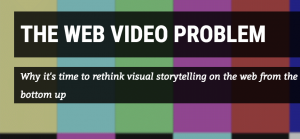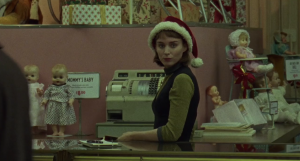Scripting Video Essays: How to Write a Great Narrative
There are many ways in which you can write video essays. Some have argued that video essays are a new trend in the world of creative writing. There is so much emphasis on developing a story from visuals, photographs, videos, and music to tell an enduring tale or lesson in this day and age.
So, if you want to join the video essay bandwagon as an artist, expert, researcher, or student, you must know how to write them first before creating them.
Writing a narrative video essay is a great way to share your ideas with the world. Narrative essays let you not only say something meaningful but also show it. A good narrative video essay is also about the art of visual storytelling.
But first, if you are wondering what exactly is a video essay. Let’s address it first.

What is a Video Essay?
A video essay is a form of a documentary-like video narrative film using film footage, video clips, and graphics to discuss an issue or topic. Academics and artists can typically use video essays to discuss their research.
In addition to blog posts and magazine articles, video essays are a new type of storytelling in the digital world. They take one idea and meticulously construct a narrative on how it came to be, how it’s been used/applied, or what it means.

In its most popular form (one person talking head), a video essay is made up of between 3-7 minutes in length and usually presents one concept or topic.
It often looks at a film and demonstrates how it is engaging in meaning or does not. The video essay can also emphasize the acts performed by actors or directors, such as performance, staging, and editing techniques.
But today, it is not fixated to film subjects only. You can also expand your visual stories about anything under the sun like history, politics, science, technology, etc. Just choose an idea and proceed with your essay writing.
Here is an excellent example of the best video essays – Example: Best Video Essays by Vox
How do you Create a Narrative in your Video Essay?
To create a compelling video essay, you must know how to write an essay with a video component to produce a compelling story. A good video essay should have the following qualities:
- It should be insightful, thought-provoking, or informative.
- It should be argumentative and practice critical thinking
- It should be visual, formal, and well-structured.
- It should help the viewer understand and appreciate a topic/situation from various angles.
- It should inspire viewers through findings, vocabulary, and plot.
The best video essays also use candid footage and demonstrate the use of nonfiction or documentary filmmaking techniques . And the main reason why people gravitate towards narrative essays is that they let you show your ideas visually to your viewers.
How to Write a Video Essay Script?
Many people are starting to make video essays as a way of presenting their own thoughts and experiences. The problem is that these videos do not have any actual narration, leaving the viewer lost trying to understand what’s happening.
But to write a grand narrative, you must follow the following stages:

Brainstorming ideas is the first stage. At this stage, you should list a few interesting concepts in an organized way. You may want to use the topic form like: “A Case for Video Essays” or “How to Create a Story Using Text and Images?” So, while ideating, follow these:
- Begin by picking a topic ( mostly what you are passionate about).
- Think about your point of view and audience.
- Set up the background and context for your essay or story (the “what”).
- Reveal the turning point in your story (the “why”).
- Provide evidence to support your account of events (the “where”)
- Discuss how the incident relates to broader social concerns (the “what now?”).
Research is the next stage of writing a video essay. The moment you decide to make a video essay, you should have enough information about the topic. The more information and research you do in the ideation stage, the easier it will be for you as a writer and speaker to share your knowledge with the audience. Research may include:
- Finding out facts from books, interviews, or research papers.
- Finding out relevant video footage of the person, place, or event.
- Getting access to the video footage of a particular event (e.g., presidential speeches).
- Find audio or video files on the Internet and transcribe them into text format (e.g., podcasts, interviews).
- THE ESSAY STRUCTURE:
Because the video essay is still relatively new, there are no definitive rules about structure and genre for these films. But still, we should adhere to some basic rules while constructing the script structure. Your structure is the most crucial stage for a crackling narrative.

The essentials of a great narrative essay structure are as follows :
- First, create a rough outline from your research material.
- Think about a compelling opening line with a single line answer to the question of the essay
- Begin with questions, then answer in a way to create an argument.
- The Argument then leads to the next question.
- The emotion and Tone of the script should be formal, thought-provoking, insightful, and informative, supported by relevant visual reference.
- The essay must represent a single point of view.
- But it should be a well-reasoned perspective.
- It must have the writer or creator’s personal touch.
- Good writing is about the economy of words articulated to the point.
- Don’t forget to mention the What is the Takeaway for the audience.
- Don’t make it lengthy. Video essays are also about documenting or reviewing videos. So the script should not eat it all.
- Once you have structured the script, go back to the beginning and review your work.
Once you have prepared a rough draft of your essay, read it out loud and find the rhythm in the story. Is it telling the theme visually? Rewrite and get the tone right. Your first few scripts may not be satisfactory. Don’t worry about that. It is a learning process.
- WRITING THE FINAL DRAFT:
Now, once you have gotten all the ideas into a script, you will be eager to write the final draft. At this stage, make sure to follow the following tips:
- Make sure every line is comprehensible so that viewers can easily understand your point of view without missing anything important in it.
- Proofread and make sure that you don’t leave any unfinished work or broken sentences in the video essay structure.
- Check the length of the video essay and make sure to follow the minimum requirements.
- Once you are done with the script, check for the formatting of your work.
- Spend extra time on a great narration that helps explain your content effectively and concisely.
- Get a clear idea about what you want to say so that you know what kind of images to use in the final draft of your essay and how they should be arranged.
- Conclude the essay by providing the audience with everything they need to know about your subject.
For a compelling narrative, the first thing to do is identify what makes the story you are trying to tell unique and why an audience wants to learn about it.
Related Question:
Are Video Essays Popular Today?
Though the concept was coined in the mid-1990s, it has only become popular in the last five years or so. As of now, a considerable amount of video essays and short films are uploaded on Youtube. Some have even garnered millions of views. The prominent mentions are the Nerdwriter, and Every Frame is a Painting.
check out – Best Video Essays of last year
How Long Does a Video Essay Take to Write?
If you are writing a long video essay, it can take you a considerable amount of time. However, if you aim to create a short film covering one event, it can be done in a day or two.
But, you may take time if you don’t have the research material in your hand.
Final words:
The video essay became popular because it is a way to engage with the writer rather than just “watching” them talk about something. But, to make a great narrative, you have to research a lot and put in your best efforts.
We hope this write-up has helped you create a great video essay. Happy writing!
Newbie Film School
Recent Content
What To Study To Become A VFX Artist?
Unlock the secrets of becoming a VFX artist by blending creativity, technical expertise, and practical skills. Discover the different streams of VFX, study at institutions or learn independently, and...
8 Tips For Shooting Your Own Videos On YouTube
When it comes to shooting your YouTube videos as a content creator, what are some crucial information you must keep in mind? Here are the tips for shooting your own videos on YouTube

Visual Rhetoric
Video essay resource guide.
PAR 102 (M-Th, 9 AM- 5 PM) Fine Arts Library Media Lab (same hours as FAL) PCL Media Lab (same hours as PCL)
About video essays
What are they.
“The video essay is often described as a form of new media, but the basic principles are as old as rhetoric: the author makes an assertion, then presents evidence to back up his claim. Of course it was always possible for film critics to do this in print, and they’ve been doing it for over 100 years, following more or less the same template that one would use while writing about any art form: state your thesis or opinion, then back it with examples. In college, I was assured that in its heart, all written criticism was essentially the same – that in terms of rhetorical construction, book reviews, music reviews, dance reviews and film reviews were cut from the same cloth, but tailored to suit the specific properties of the medium being described, with greater emphasis given to form or content depending on the author’s goals and the reader’s presumed interest.”
Matt Zoller Seitz on the video essay .
what makes a good video essay?
Tony Zhou on how to structure a video essay
Kevin B. Lee on what makes a video essay “ great “
why should we use them? what are their limits?
Kevin B. Lee’s experimental/artistic pitch for video essays
Kevin B. Lee’s mainstream pitch for video essay
“Of all the many developments in the short history of film criticism and scholarship, the video essay has the greatest potential to challenge the now historically located text-based dominance of the appraisal and interpretation of film and its contextual cultures…”
Andrew McWhirter argues that t he video essay has significant academic potential in the Fall 2015 issue of Screen
“Importantly, the [new] media stylo does not replace traditional scholarship. This is a new practice beyond traditional scholarship. So how does critical media differ from traditional scholarship and what advantages does it offer? First, as you will see with the works in this issue, critical media demonstrates a shift in rhetorical mode. The traditional essay is argumentative-thesis, evidence, conclusion. Traditional scholarship aspires to exhaustion, to be the definitive, end-all-be-all, last word on a particular subject. The media stylo, by contrast, suggests possibilities-it is not the end of scholarly inquiry; it is the beginning. It explores and experiments and is designed just as much to inspire as to convince…”
Eric Fadden’s “ A Manifesto for Critical Media “

Adam Westbrook’s “ The Web-Video Problem: Why It’s Time to Rethinking Visual Storytelling from the Bottom Up “
Video essayists and venues
Matt Zoller Seitz (various venues) A writer and director by trade, Zoller Seitz is nonetheless probably best known as a prominent American cultural critic. He’s made over 1000 hours of video essays and is generally recognized as a founder of the video essay movement in high-brow periodicals. A recognized expert on Wes Anderson, Zoller Seitz is also notable because he often mixes other cinematic media (especially television) into his analysis, as in the above example, which doubles as an experiment in the absence of voiceover.

Various contributors, Press Play Co-founded by Matt Zoller Seitz and Ken Cancelosi, Press Play (published by Indiewire) is one of the oldest high-brow venues for video essays about television, cinema, and other aspects of popular culture.
Various contributors, Keyframe (A Fandor online publication) Fandor’s video essay department publishes work from many editors (what many video essayists call themselves) on and in a range of topics and styles. Check it out to get an idea of all that things a video essay can do!

Various contributors, Moving Image Source A high-brow publication for video essays.
Tony Zhou, Every Frame a Painting The master of video essays on filmic form, Tony’s arguments are clean, simple, and well-evidenced. Look to Tony as an example of aggressive and precise editing and arrangement. He’s also an excellent sound editor–pay attention to his choices and try out some of his sound-mixing techniques in your essay.
Adam Johnston, Your Movie Sucks (YMS) Although an excellent example of epideictic film rhetoric, this channel is a great example of what not to do in this assignment (write a movie review, gush about how good/bad you think a movie is, focus on motifs or narrative content instead of film form as the center of your argument). What you can learn from Adam is a lot about style. Adam’s delivery, pacing, and editing all work together to promote a mildly-disinterested-and-therefore-credible ethos through a near-monotone, which I’ll affectionately dub the “Daria” narratorial ethos.
Adam Westbrook, delve.tv Adam Westbrook is part of an emerging group of professional video essayists and delve.tv is his version of a visual podcast. Using the video essay form, Adam has developed a professional public intellectual ethos for himself through skillful overlay of explanation/interpretation and concept. Check out Westbrook’s work as a really good example of presenting and representing visual concepts crucial to an argument. He’s a master at making an argument in the form of storytelling, and he uses the video essay as a vehicle for that enterprise.
:: kogonada (various venues) If you found yourself wondering what the auteur video essay might look like, :: kogonada is it. I like to call this “expressionist” video essay style. Kogonada is the ultimate minimalist when it comes to voiceover/text over–its message impossibly and almost excessively efficient. Half of the videos in his library are simple, expertly-executed supercuts , highlighting how heavily video essays rely on the “supercut” technique to make an argument. Crafting an essay in this style really limits your audience and may not be a very good fit for the constraints of assignment (very “cutting edge,” as we talked about it in class), but you will probably draw inspiration from ::kogonada’s distinct, recognizable style, as well as an idea of what a video essay can do at the outer limits of its form.
Lewis Bond, Channel Criswell Narrating in brogue-y Northern English, Bond takes his time, releasing a very carefully-edited, high-production video essay once every couple of months. He’s a decent editor, but I feel his essays tend to run long, and I feel rushed by his narration at times. Bond also makes a useful distinction between video essays and analysis/reviews on his channel–and while most of his analysis/reviews focus on film content (what you don’t want to imitate), his video essays stay pretty focused on film technique (what you do). Hearing the same author consciously engage in two different modes of analysis might help you better understand the distinction between the two, as well.
Jack Nugent, Now You See It Nugent’s brisk, formal analysis is both insightful and accessible–a good example of what it takes to secure a significant following in the highly-competitive Youtube marketplace. [That’s my way of slyly calling him commercial.] Nugent is especially good at pairing his narration with his images. Concentrate and reflect upon his simple pairings as you watch–how does Nugent help you process both sets of information at the pacing he sets?
Evan Puschak, The Nerdwriter Nerdwriter is a great example the diversity of topics a video essay can be used to craft an argument about. Every week, Puschak publishes an episode on science, art, and culture. Look at all the different things Puschak considers visual rhetoric and think about how he’s using the video essay form to make honed, precisely-executed arguments about popular culture.
Dennis Hartwig and John P. Hess, FilmmakerIQ Hartwig and Hess use video essays to explain filmmaking technique to aspiring filmmakers. I’ve included the channel here as another example of what not to do in your argument, although perhaps some of the technical explanations that Hartwig and Hess have produced might help you as secondary sources. Your target audience (someone familiar on basic film theory trying to better understand film form) is likely to find the highly technical, prescriptive arguments on FilmIQ boring or alienating. Don’t focus on technical production in your essay (how the film accomplishes a particular visual technique using a camera); rather, focus on how the audience interprets the end result in the film itself; in other words, focus on choices the audience can notice and interpret–how is the audience interpreting the product of production? How often is the audience thinking about/noticing production in that process?
Kevin B. Lee (various venues) A good example of the older, high-brow generation of video essayists, Kevin’s collection of work hosted on his Vimeo channel offers slow, deliberate, lecture-inspired readings of film techniques and form. Note the distinct stylistic difference between Kevin’s pacing and someone like Zhou or Lewis. How does delivery affect reception?
Software Guides
How to access Lynda tutorials (these will change your life)
Handbrake and MakeMKV (file converters)
Adobe Premiere (video editing)
Camtasia (screen capture)
File management
Use your free UTBox account to upload and manage your files. Make sure you’ve got some sort of system for tracking and assembling everything into your video editing software. UTBox has a 2 terabyte limit (much higher than Google Drive) and is an excellent file management resource for all sorts of academic work.
Adobe Premiere saves versions with links to your video files, so it’s imperative that you keep your video files folder in the same place on every machine you open it up on. That’s why I keep all my video files in a big folder on box that I drop on the desktop of any machine I’m working on before I open my premiere files. The Adobe Premiere project walkthrough has more details on this.
Where to find video and how to capture it
About fair use . Make sure your composition complies with the Fair Use doctrine and familiarize yourself with the four criteria.
The best place to capture images is always from a high-resolution DVD or video file . The first place you should go to get the film is the library– see instructions for searching here .
To import the video and audio from your DVD or video file into your video editing software (like Premiere), you will first need to use a software to convert it to an .mkv. See instructions on how to do that here .
Camtasia tutorials . Camtasia is a program that allows you to capture anything that’s going on on your screen . This is a critical tool for this assignment as you decide what kind of interface you want to present to your reader in your video essay. Camtasia also allows you to capture any high-quality video playing on your desktop without licensing restrictions.
You can also use Clip Converter to capture images and sound from pre-existing YouTube videos , and it may be a little faster and easier than Camtasia. I suggest converting things into .mkv before putting them into your video editor, regardless of where you get the material from.
Film theory and criticism
- /r/truefilm’s reading and viewing guide
Leave a Reply Cancel reply
You must be logged in to post a comment.

IMAGES
VIDEO
COMMENTS
Now, you can turn the script to a video. FlexClip understands the script, finds the pictures that relate to the text, and then combines them. Copy and paste and video script to the FlexClip's text to video tool and try if you can get a satisfying video essay. Turn Script to Video. Step 3.
A good video essay should have the following qualities: It should be insightful, thought-provoking, or informative. It should be argumentative and practice critical thinking. It should be visual, formal, and well-structured. It should help the viewer understand and appreciate a topic/situation from various angles.
Every week, Puschak publishes an episode on science, art, and culture. Look at all the different things Puschak considers visual rhetoric and think about how he’s using the video essay form to make honed, precisely-executed arguments about popular culture. Focusing on Depth of Field and Lens Equivalents. Watch on.